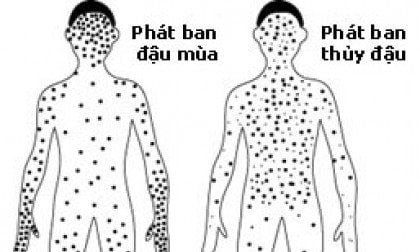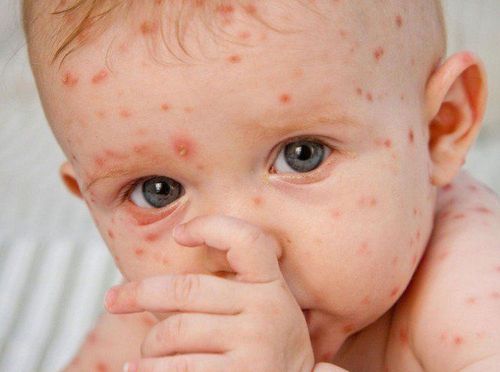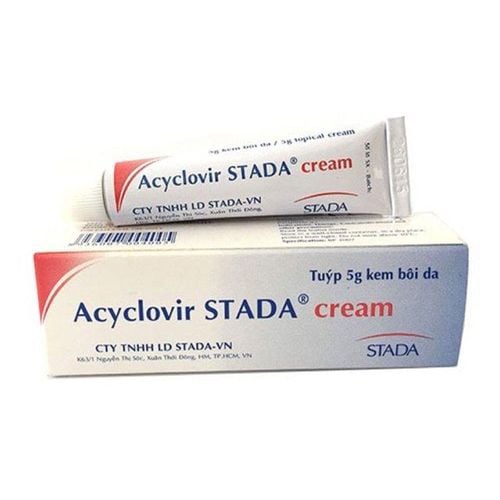This is an automatically translated article.
The article is professionally consulted by Master, Doctor Vu Quoc Anh - Pediatrician - Department of Pediatrics - Neonatology - Vinmec Danang International General Hospital. Dr. Anh has nearly 10 years of experience as a resident doctor and treating doctor at Hue Central Hospital and Danang Children's Hospital. Her strength is diagnosis and treatment of pediatric diseases; Pediatric resuscitation and first aid.Smallpox and chickenpox both appear as blisters, causing lesions on the skin. However, the chickenpox rash appears in clusters on the face, abdomen, and back, and is scattered on the hands. Smallpox is more concentrated in the hands and feet
1. Distinguish smallpox and chickenpox
1.1 Similarities Smallpox and chickenpox both cause symptoms of skin lesions, fever, fatigue, and loss of appetite.The disease has the ability to spread quickly and form a high epidemic.
Prevention of smallpox and chickenpox is only possible with prior vaccination.
There is a risk of causing complications due to foreign viruses when treating the disease.
Can be spread by contact with patient skin fluids, clothing, towels, shared blankets as well as other personal items.
1.2. 2 different diseases caused by 2 different viruses. Chickenpox is caused by the Varicella Zoster virus, and smallpox is caused by the Variola virus. Smallpox spots are smaller, the amount of fluid in the pimples is less. Chickenpox blisters look like water bubbles, break easily and cause infection if not kept clean. Smallpox is more potentially life-threatening than chickenpox. Variola virus has 2 strains: Variola major causes severe smallpox - mortality/infection rate from 20 - 50%; Variola minor causes mild smallpox with a mortality rate of less than 1%. However, on average, the fatality rate for smallpox is about 15-20%. According to WHO statistics, from 1978 to now, smallpox has not appeared and will not return. Chickenpox has an incubation period of 10-21 days, while smallpox has an incubation period of 7-14 days. There are also different types of smallpox and chickenpox vaccines, and when and how they are given. As for how it's diagnosed, chickenpox is diagnosed clinically based on symptoms and a vesicle test is done to give the results. While smallpox is diagnosed by testing the vesicle fluid and cell count increase through tissue culture.

2. Distinguishing symptoms of smallpox and chickenpox
2.1 Similarities Smallpox and chickenpox both cause patients to appear pustules, blisters, causing lesions on the skin lasting from 2-4 days. Then gradually break off, dry and peel off the scales, which can leave dark scars on the skin. Smallpox and chickenpox are both latent 1-2 days before the signs of high fever, fatigue, and headache appear. 2.2 Different Smallpox is also characterized by body aches, difficulty in movement. The chickenpox rash appears in clusters, appearing many on the face, abdomen, back and scattered on the hands. The rash usually starts on the face and chest and spreads to the rest of the body, including the eyelids, mouth, and genital area. Smallpox is more concentrated in the hands and feet. Initially there are small spots on the tongue and in the oral cavity, which can lead to the potential for transmission of large amounts of virus and the throat. Chickenpox can still reappear in people who have had chickenpox before, but can become completely immune once they have had it. And smallpox has now been completely eradicated, and now only appears in the national epidemiological archives, serving experimental work. In summary, chickenpox and smallpox, whether in adults or children, can cause bad complications, so when infected, you should go to reputable hospitals for examination and treatment. In particular, you should not self-treat at home because it can make patients, especially children, more infected and sick.Please dial HOTLINE for more information or register for an appointment HERE. Download MyVinmec app to make appointments faster and to manage your bookings easily.














